10 reasons why 2019 was another great year for Buzzards Bay
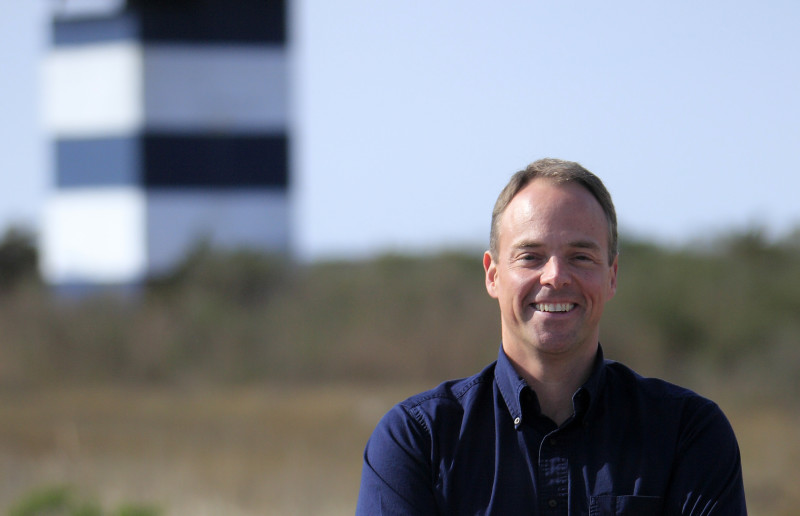
Mark Rasmussen is the president of the Buzzards Bay Coalition and Buzzards Baykeeper®
Thanks to the strong support of more than 10,000 members across our region, your Buzzards Bay Coalition made some great strides in 2019. As a supporter, you know that Saving Buzzards Bay is accomplished through ongoing pollution cleanup, focused land protection, active restoration, and community engagement — in projects and initiatives like the ones described below.
I’m proud to share this list of 10 of our greatest accomplishments from 2019. You can count on us to continue to work on these and more great projects to Save Buzzards Bay in 2020. You can help support these projects by making a year-end contribution to the Coalition today.
1. Advancing the protection of Cuttyhunk Island
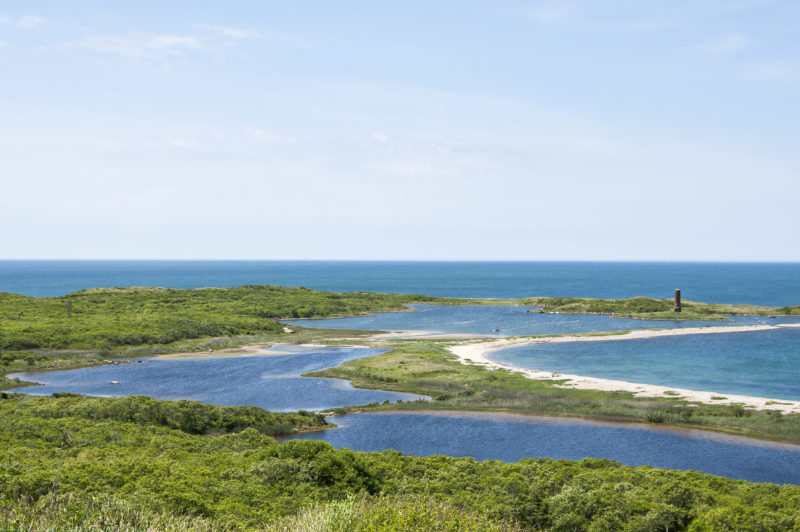
The donation of a conservation restriction from the Spaulding Family will preserve the unmatched beauty and natural resources of Cuttyhunk’s West End.
This year, the Buzzards Bay Coalition took several strides forward in an ambitious project to protect the unspoiled beauty of Cuttyhunk Island, the outermost member of the Elizabeth Island chain. By protecting more than 300 acres of land on the island, the Cuttyhunk Conservation Project will ensure that the Cuttyhunk we know today — clean water and clean beaches, scenic views across miles of salt water, abundant fish and wildlife, and unspoiled natural habitats — is forever protected for all to enjoy. In May, Gosnold voters affirmed their united support for this mission, unanimously approving a contribution of $400,000 from the town to the overall project.
In August, trustees of the Bouchard Barge 120 (B120) oil spill settlement recommended a contribution of $500,000 from the settlement funds to the Cuttyhunk project, a third of the funding requested. The trustees set aside the remaining $1,274,000 for a yet-to-be-determined bird restoration project in Rhode Island. Yet in October, four Rhode Island groups submitted letters to the trustee council requesting that the full $1.8 million in funding be allocated to the Cuttyhunk project. These groups share our view that the bird habitat resources of Cuttyhunk are part of – and benefit – the coastal environment of Rhode Island, and the birds that use these lands and waters.
While we await the final decision of the trustee council this winter, the Coalition is continuing to push forward and pursue all potential avenues to complete Cuttyhunk’s protection.
2. Defending clean water by protecting hundreds of acres of land, from Westport to Woods Hole
It’s been a big year for watershed protection with the Coalition. Working both independently and with our partners, we placed hundreds of land under permanent protection from development. In Dartmouth, we started the year by protecting another 29 waterfront acres on Allens Pond, part of a larger campaign to protect the entire shoreline of this vital coastal salt pond. We’re ending the year with another series of land protection projects in Dartmouth: the conservation of the forests and salt marshes of Apponagansett Bay Farm Reserve, in partnership with the Dartmouth Natural Resources Trust, as well as Eva’s Garden, an extraordinary organic farm near Allens Pond.
In Mattapoisett, we worked with the Mattapoisett Land Trust to protect 120 acres of woods and wetlands around Pine Island Pond, which became the first land conservation project to receive funding through the state’s Municipal Vulnerability Preparedness (MVP) Program. This initiative supports towns’ efforts to become more resilient to climate change. By protecting the land behind the expanses of salt marsh that surround Pine Island Pond, we are ensuring that salt marshes have room to migrate inland as sea levels rise.
And in Acushnet, the Coalition’s subsidiary, the Acushnet River Reserve, Inc., purchased the former site of Riverside Auto Sales and Salvage, and took the first step towards making it part of a publicly accessible waterfront park and natural preserve. This piece of land will play an important role in the federal Environmental Protection Agency (EPA)’s Superfund cleanup of salt marshes that border New Bedford Harbor, as well as further a larger effort to rejuvenate lands around the Acushnet River and New Bedford Harbor.
3. Bringing on-the-water programming to hundreds of kids, as the Onset Bay Center approaches its opening
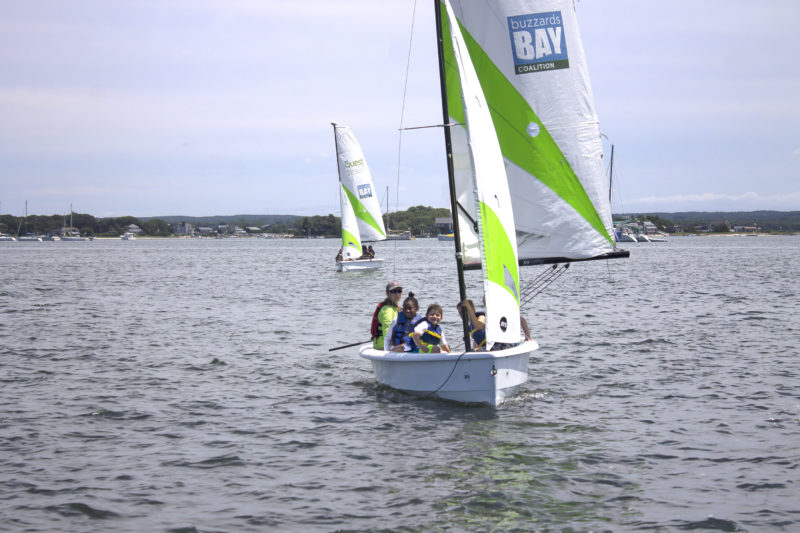
Kids in the Onset Bay summer program participated in 45-minute sessions of outdoor activities like sailing, kayaking, and swimming.
We can hardly wait until the day next spring that we officially open the doors of the Onset Bay Center, our new hub for outdoor exploration in the renovated Onset Bathhouse on Onset Beach. In anticipation of a spring 2020 opening, we had an exciting year of construction on the new center. The Valle Group worked to strengthen the old building’s foundation and structure to make it resilient to floods from storms and sea level rise, as well as fit the bathhouse with walls and flooring. During a pause in construction this summer, we hosted our second summer of outdoor exploration camp for kids from the Boys and Girls Club of Wareham and Wareham Public School’s CARE. More than 100 kids splashed into shoreline exploration, snorkeling, shellfishing, sailing, swimming, and kayaking – an exciting preview of the suite of outdoor activities that the Onset Bay Center will provide to kids and adults alike.
This fall, we began the next phase of development for the Onset Bay Center with the hiring of Katherine Garofoli and Tom Tucker, who will serve as the Onset Bay Center’s first Director and Program Manager, respectively. Both individuals bring decades of experience in outdoor programming and community collaboration, and we can’t wait to see what they create out of the vibrant lands, facilities, and community that await them in Onset.
4. Closing the book on a decade of advocacy to clean up Marion sewage lagoons
One of our favorite accomplishments of 2019 was over a decade in the making. In a 2010 study in cooperation with the town of Marion, the Coalition discovered that the three lagoons where the town pumped sewage were unlined. That meant these lagoons were leaching contaminants and nitrogen pollution into groundwater and local water bodies.
When the town declined to address the problem, the Coalition went first to the federal Environmental Protection Agency, then to the state Department of Environmental Protection, and finally to the State Court to halt the pollution. This year, that persistence led to a settlement that ends this 50-year source of pollution, enabling a cleaner future for Marion waterways.
5. Implementing long-term research efforts for Bay salt marshes
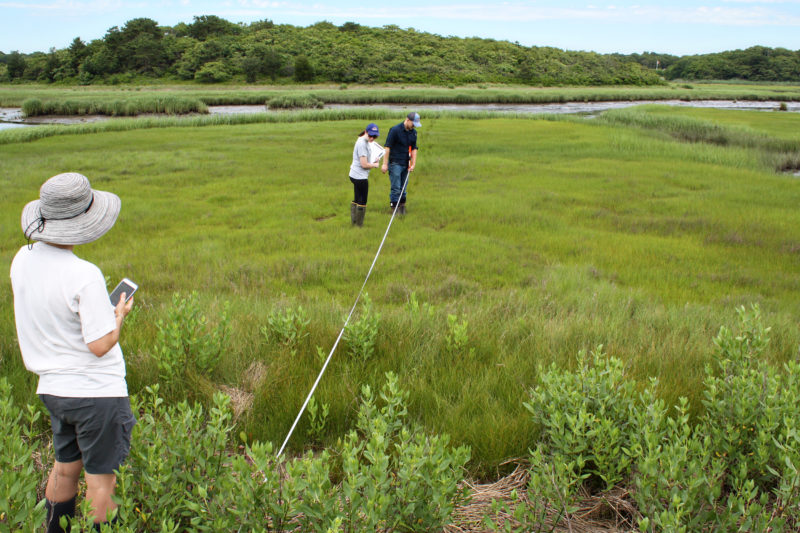
Salt marsh interns Ryan Kappel and Heather Gaughan lay a transect, along which researchers will monitor marsh plants and animals year after year.
The Bay’s salt marshes are one of its most valuable resources, but the impacts of human activity—primarily, nitrogen pollution and sea level rise—mean that salt marshes are facing a difficult future around the Bay. This year, the Coalition’s science team took on a new set of research efforts to study these vital habitats. Last fall, we launched a new study that will establish where Bay towns are losing salt marshes by taking high-resolution aerial images of the entire Bay coastline at low tide. And this past summer, we partnered that work with research on the ground, kicking off a project with the Buzzards Bay National Estuary Program (NEP), which will monitor a dozen salt marsh sites— gathering information about each marsh’s elevation and plant and animal life—every summer.
Additionally, we’re excited to start 2020 with a new member of the science team focusing on salt marshes. Alice Besterman, a PhD graduate of the University of Virginia, will be the first scientist to complete postdoctoral research with the Coalition. Besterman will compare the aerial images we captured in the fall to aerial images that date all the way back to the 1930s, allowing her to calculate how fast we’re losing these wetlands, and where. She’ll also begin testing a new method called runneling, which could help drain water off salt marshes and help them cope with the onslaught of sea level rise.
6. Removing the Bay’s worst dam
Every year, migratory fish in Wareham’s Weweantic River – home of the Bay’s most diverse fish population – hit a barrier during their spring migration. A crumbling dam has sat on the Weweantic for more than 200 years, blocking fish passage right at the head of tide, where salt water from the Bay meets fresh water flowing from the river’s headwaters in Carver and Middleborough.
In December, the Coalition and its contractors fully removed this impediment to fish migration. That means that this spring, fish in the Weweantic will be able to swim unhampered from the Bay to new breeding grounds in fresher waters upstream for the first time in centuries. Construction at Horseshoe Mill will continue through the winter into early spring to finish work on the bridge, improve the site’s trail network, and add two new kayak launches that will allow paddlers to experience this special place.
7. Raising record funds and participation in the Buzzards Bay Swim and Watershed Ride
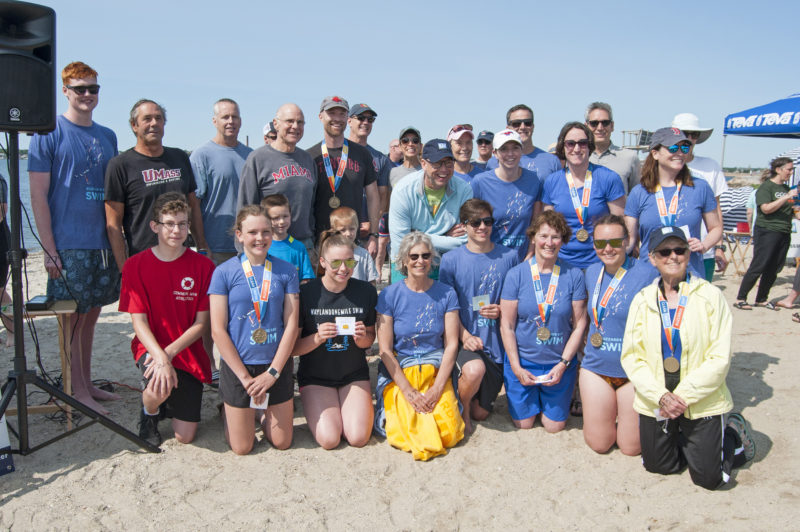
Rob Jones of Falmouth was the top overall finisher, completing the course in 22 minutes. Elizabeth Krane of St. Louis, Mo. was the top female finisher with a time of 24:53. Top finishers in each age group were also recognized.
We had a record-breaking year at two of our signature fundraising events, the Buzzards Bay Swim and the Watershed Ride. On June 22, 278 swimmers crossed outer New Bedford Harbor for the 26th annual Swim, raising over $180,000— a new record for this event. On October 6, over 300 cyclists in our 13th annual Ride shattered records once again, setting a new high for both participation and fundraising when they brought in more than $215,000 for clean water. Time and time again, the Swim and the Ride impress on us the power of community around Buzzards Bay. We are always floored and thankful for the commitment to the Bay’s health shown by those swimming with us, riding with us, and supporting these events every year.
Are you already raring to go for next year? We certainly are! Save the date for the 2020 events: the Swim will take place on June 27, 2020, and the Ride on October 4, 2020. Registration for the Swim opens on January 1!
8. Growing our commitment to clean water and community engagement in Westport
With its vibrant mix of agricultural heritage, sprawling woodlands, and pristine coastlines, the town of Westport holds a special place in our hearts, especially following our merger in late 2018 with the Westport Fishermen’s Association (WFA). Over the summer, we increased our efforts on behalf of Westport’s water quality by installing five “layer cake” nitrogen-reducing septic systems in the town. We’ve also been a vocal advocate of regulations being considered by the Westport Board of Health that would require all newly-constructed homes to install these denitrifying systems.
If you visited Horseneck Beach or Gooseberry Island this summer, you might have spotted another new Coalition sign in Westport. This summer marked our first as caretakers of the Horseneck Point Life-Saving Station, a historic building and learning center that the Coalition inherited curatorship of through the WFA merger. Between the end of June and the end of August, the station saw nearly 600 visitors of all ages, who learned about Buzzards Bay and explored Westport’s rich maritime legacy through the Life-Saving Station’s history.
9. Proving the positive effect of action for clean water through monitoring
Scientific monitoring programs form the foundation of all the work we do at the Buzzards Bay Coalition. This includes not only our Bay-wide water quality monitoring in the summer, but also conservation land monitoring in the winter, which ensures that the land we protect always stays that way.
This year, our monitoring programs delivered positive signs that our work for the Bay is having a definitive impact. Data collected through the Baywatchers program showed that Buzzards Bay’s health largely improved over the course of 2018, with roughly two-thirds of waterways showing an improvement compared to the previous year. And counts of river herring collected by the Coalition and its partners found that population numbers of these fish, an important link in the Bay’s food chain, were up in three of the Bay’s most important rivers: the Agawam, Acushnet, and Mattapoisett rivers.
These changes suggest an encouraging trend, but there are still far too many waterways around the Bay with poor or decreasing health and too few river herring compared to historic populations. Still, these positive trends signal that our work is making an impact and inspire us to redouble our efforts.
10. Reaching 250 Places on Discover Buzzards Bay
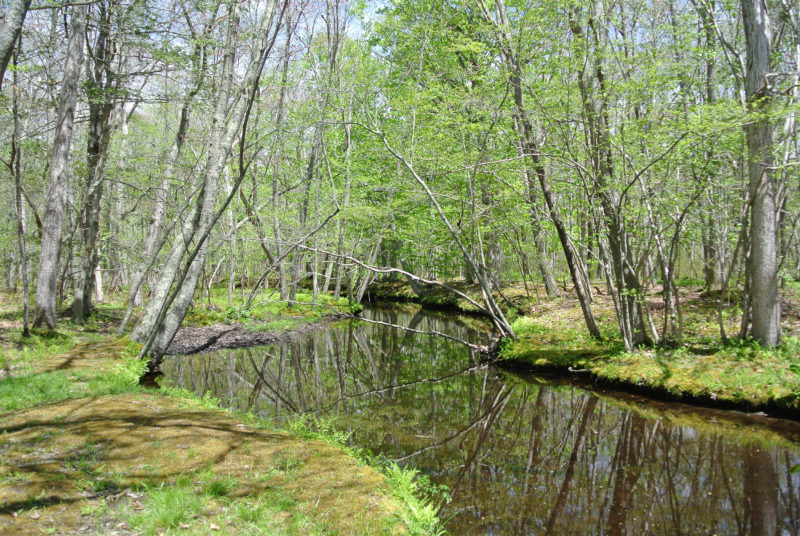
Wilbour Woods, in Little Compton, is just one of the 76 beautiful new places to explore using Discover Buzzards Bay.
Time and time again, we’ve seen that the people with the strongest commitment to protecting Buzzards Bay are those who use it, know it, and love it. That’s why we created Discover Buzzards Bay, an online tool that helps local residents find unique and exciting ways to explore the outdoors, get some exercise, and connect with nature. Discover Buzzards Bay is a free resource that everyone — of all ages, interests, and abilities — can use, providing a portal to hundreds of outdoor adventures across the Buzzards Bay region.
This year, we reached an exciting milestone when we passed 250 Places To Go on Discover. The website now features somewhere to explore in every town around Buzzards Bay and Vineyard Sound, from Little Compton to Aquinnah, and it will continue to grow and expand.
We encourage you to visit the Discover Buzzards Bay website and find somewhere new near you to explore. None of what we accomplished in 2019 would have been possible without your support. We think the best way to celebrate that is by getting outside and enjoying all that your Buzzards Bay offers.